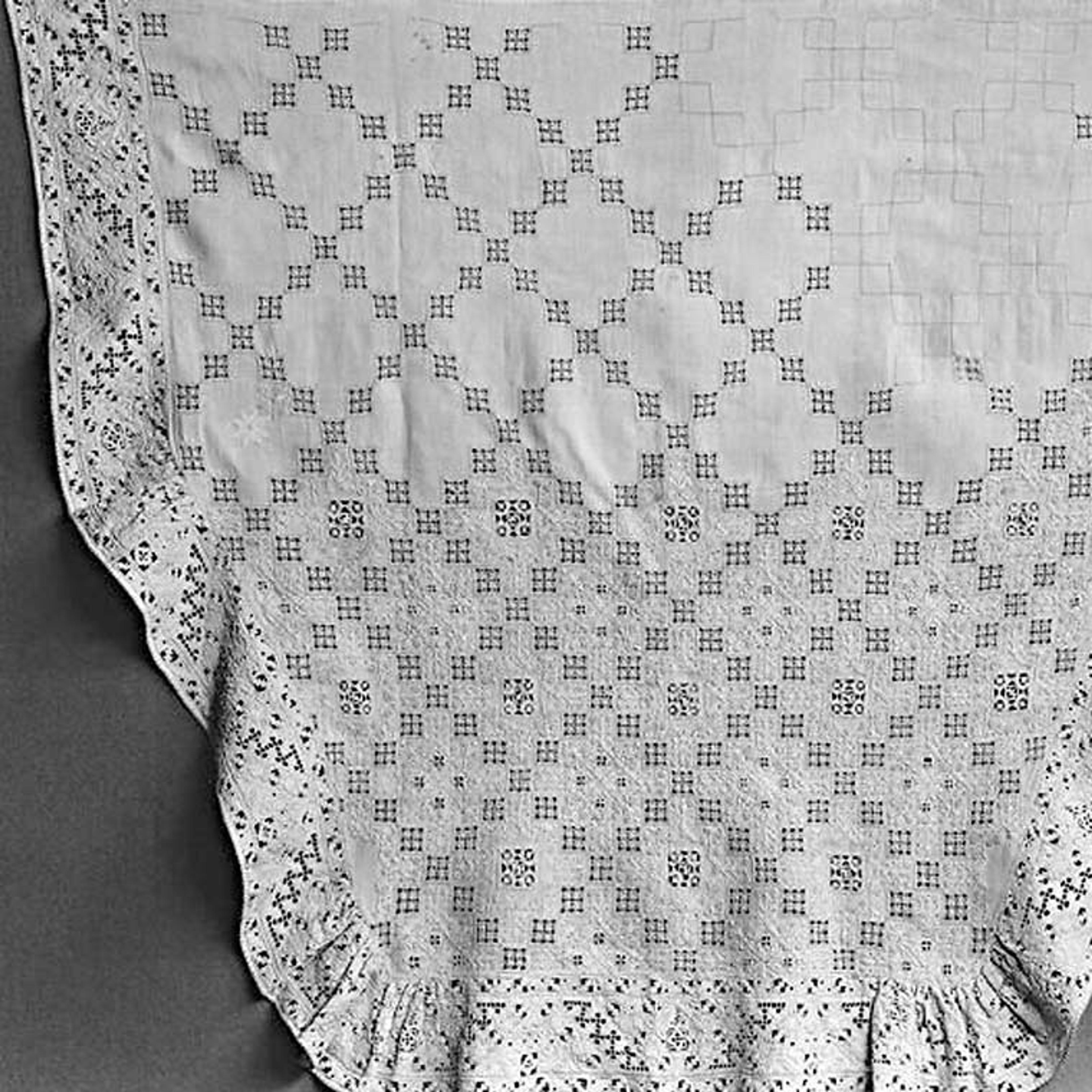
Detail of an 18th century lace flounce from Antique Laces of American Collectors (New York: Published for the Needle and Bobbin Club by W. Helburn Inc., 1920-1926)
Thanks to a fellowship awarded by Pratt Institute, I had the opportunity to spend the past academic year working in the Thomas J. Watson Library. My primary project was the digitization of books from the Antonio Ratti Textile Center.
Though all related to textiles, the books I worked on are all quite different from one another. My first major project was the digitization of a 1955 book of Frank Lloyd Wright–designed textile and wallpaper samples.
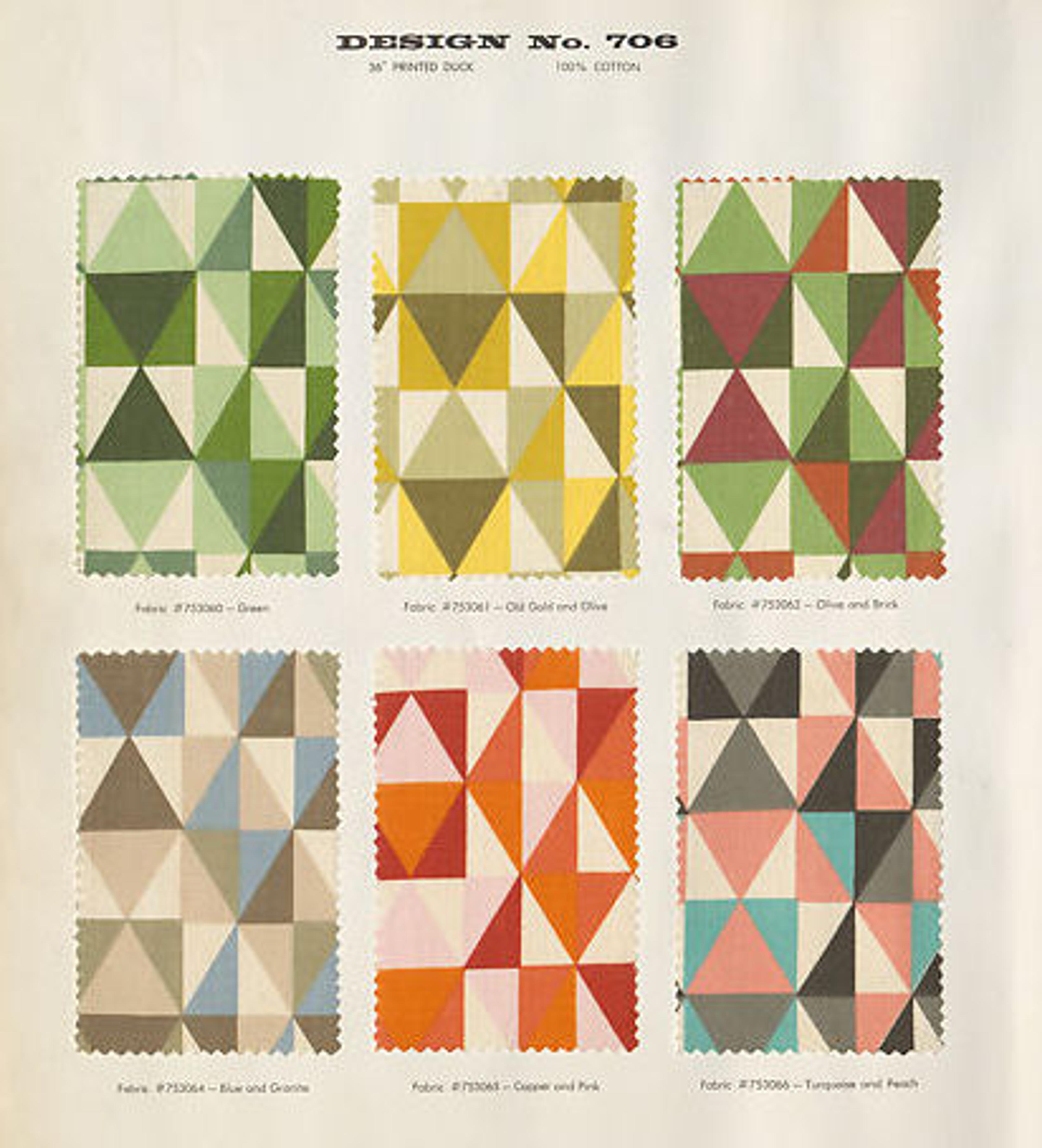
Frank Lloyd Wright (American, 1867–1959). Schumacher's Taliesin Line of Decorative Fabrics and Wallpapers Designed by Frank Lloyd Wright (design 709). 1955. Book. The Metropolitan Museum of Art, Purchase, Friends of the American Wing Fund, 1999 (1999.255a, b).
I was fortunate to be given a tour of the Textile Conservation Department lab, where I got to see larger pieces of the textiles that were sampled in the book, as they were being prepared for exhibition.
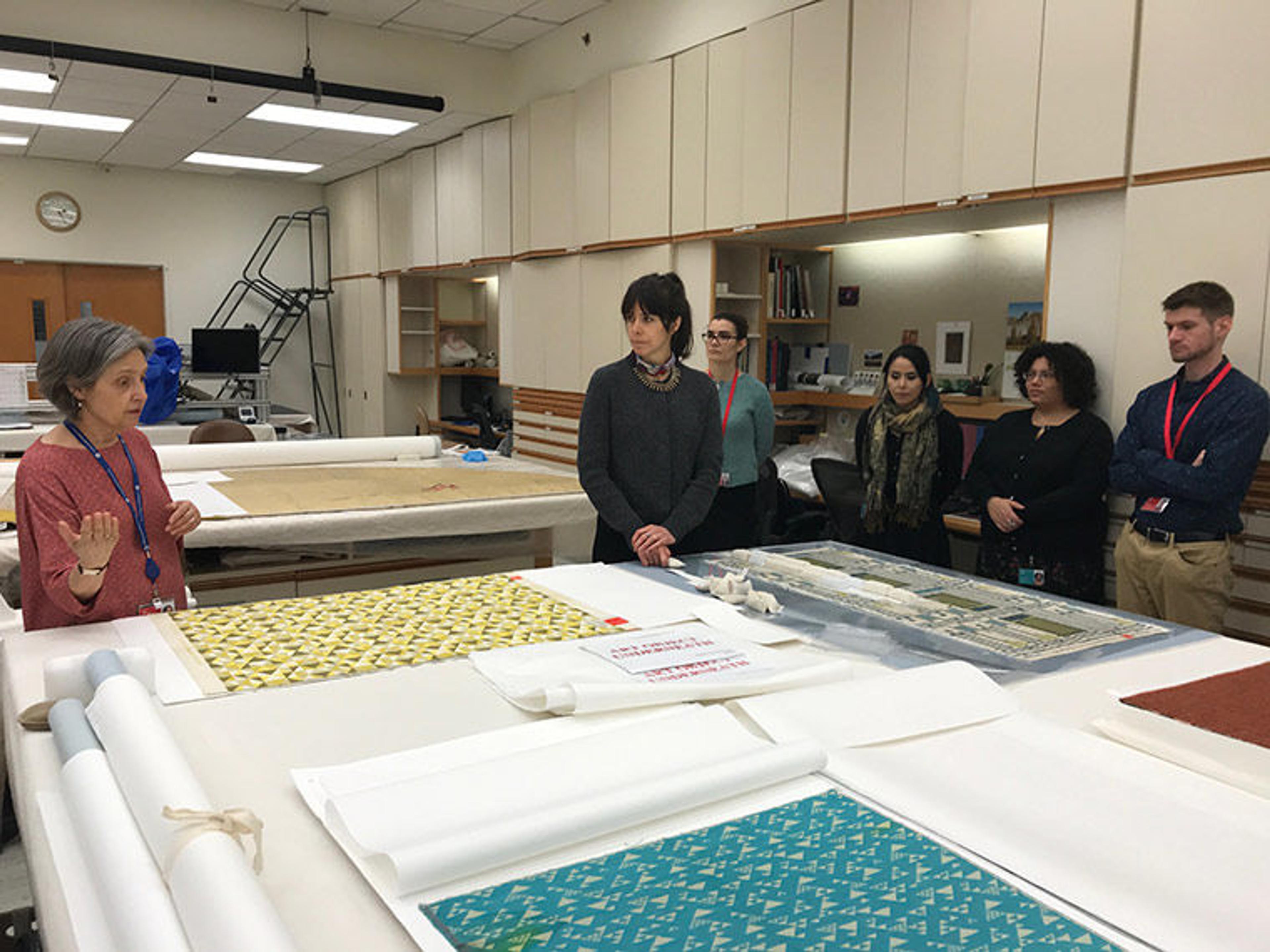
Watson staff on a tour of The Ratti Center for Textile Conservation. Photo by Robyn Fleming
One of only a hundred ever made, this book and nine corresponding textile samples are a part of the current exhibition Frank Lloyd Wright Textiles: The Taliesin Line, 1955–60, on view at The Met Fifth Avenue in gallery 599, through April 5, 2020.
The next book I worked on was a book of hand loom weaving patterns by Pennsylvania weaver William Grimes, which was created in the mid–1800s. Unlike the Frank Lloyd Wright book, this book did not contain any actual fabric. Rather, it is a book of patterns that Grimes used to weave coverlets. This book is made up of patterns that Grimes drew up by hand for his own reference.

Pattern Book (page 1), 1830-1870. The Metropolitan Museum of Art, Gift of John Grimes De Jong, 1969 (69.291.2)

Weaving loom patterns from William Grimes's Pattern Book
Although the hand-drawn patterns are extremely interesting and beautiful, my favorite part of this book is the page where it appears a child has drawn a woman in a fancy dress.

A young child's drawing found among the weaving patterns from William Grimes's Pattern Book
The rest of the books I digitized were exclusively related to lace. A Collection of Lace Classification, a manuscript written in 1906 by Margaret Taylor Johnstone, is exactly what it says in the title: classifications of different types of lace, arranged geographically and by time period. Margaret Taylor Johnstone was the niece of John Taylor Johnston, the first president of The Met. Due to her close ties with the Museum, she wrote the book specifically for The Met, and it contains information about many pieces that are in The Met's collection.
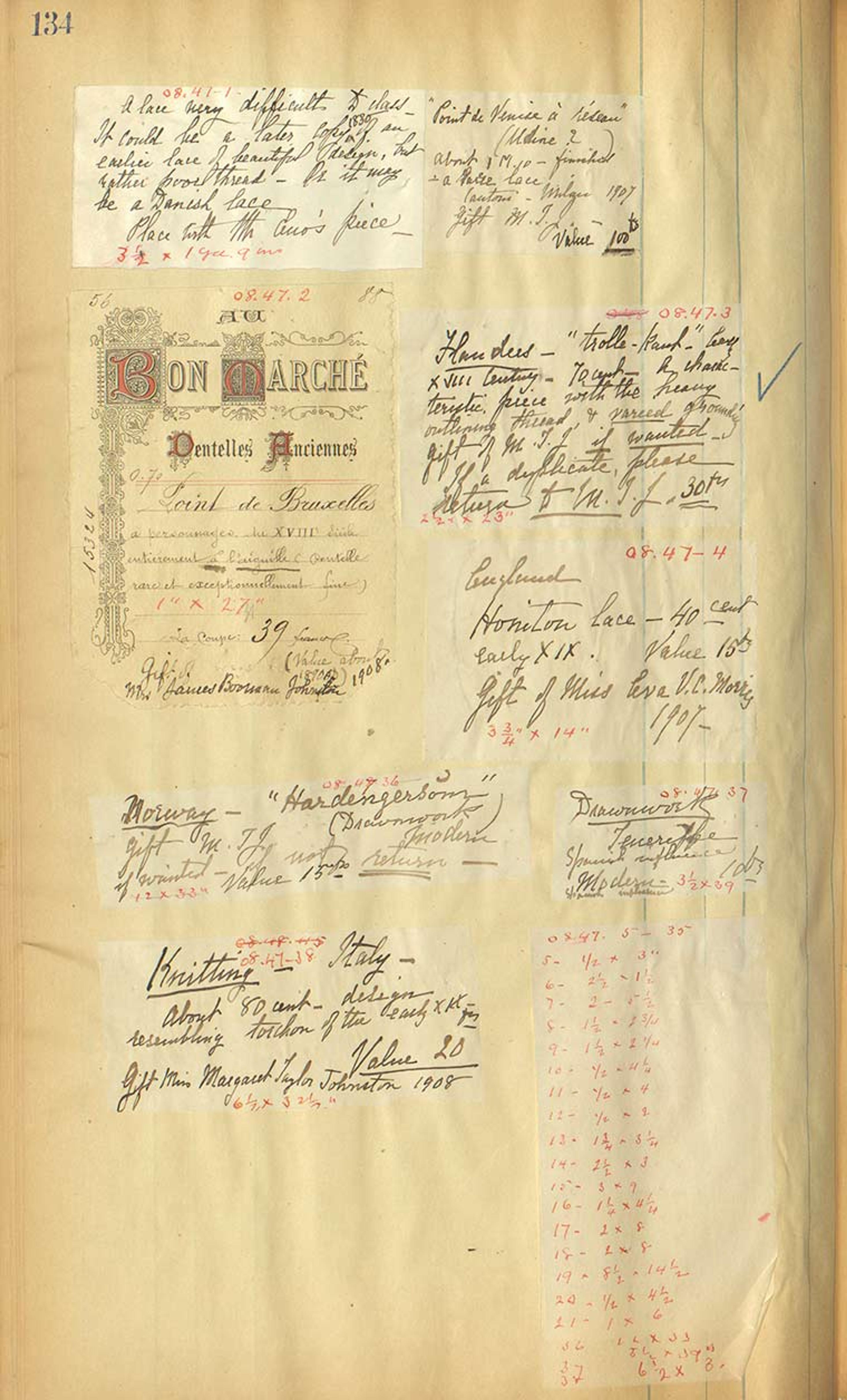
A page from the 1906 version of A Collection of Lace Classification by Margaret Taylor Johnstone
In 1906, The Met opened a lace room to showcase its extensive collection of antique lace. According to several Met Bulletins written at the time, the seven hundred pieces displayed in the lace room were arranged according to Johnstone's classification system.

The Met's lace room as it was in 1907
Johnstone later refined A Collection of Lace Classification in 1937. Both of these copies are now available in our digital collections.

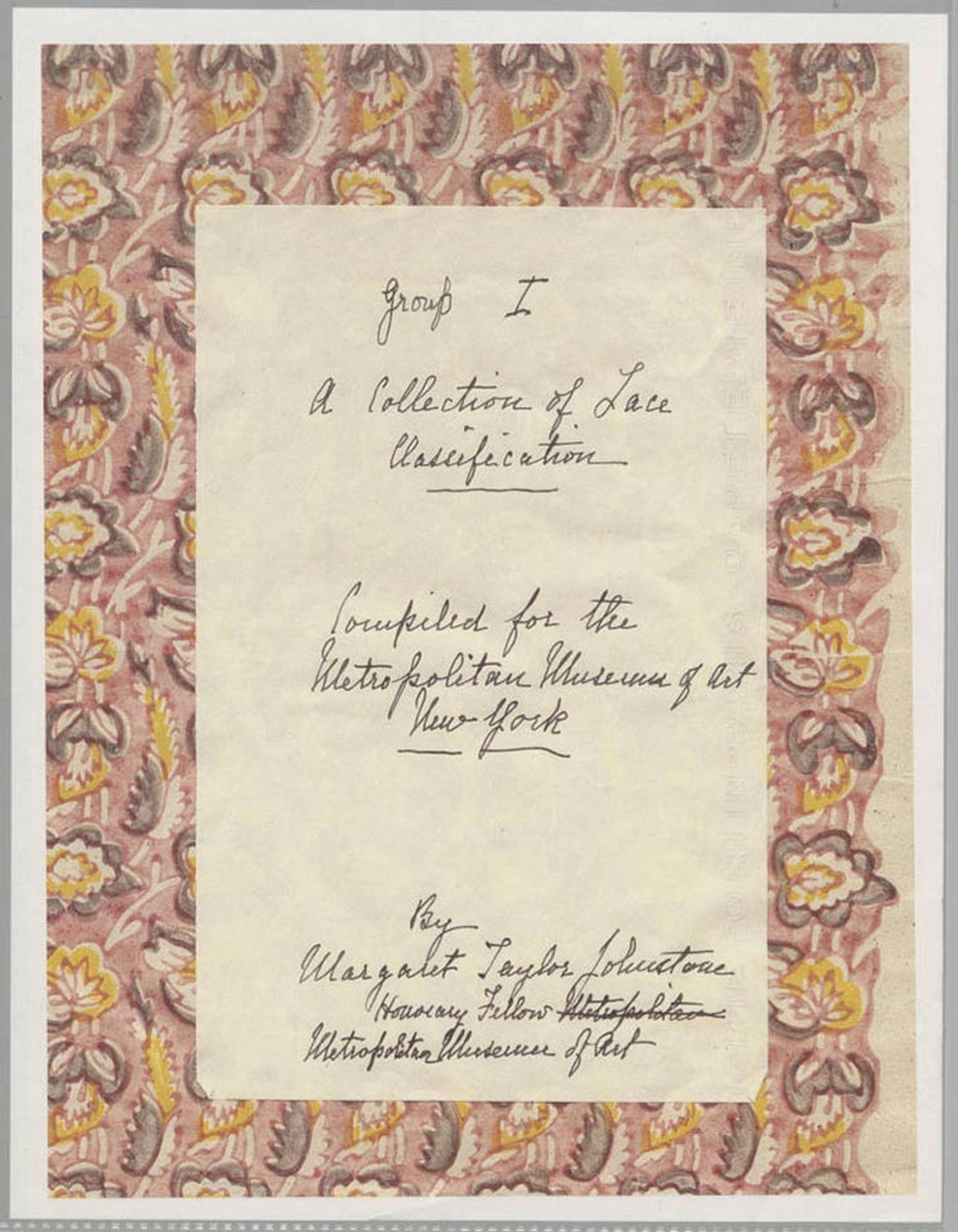
Two pages from the 1937 version of A Collection of Lace Classification by Margaret Taylor Johnstone
I also worked with Antique Laces of American Collectors, co-written in the 1920s by Frances Morris and Manan Hague, and published by the Needle and Bobbin Club. Frances Morris was the first textile curator at The Met (and the first woman to work at The Met as a professional!) and was a founder of the Needle and Bobbin Club in 1916. Along with detailing the art of lacemaking from the 1600s to the 1800s, this gorgeous book showcases the private collections of many prominent American families, including the collections of Mrs. J. Pierpont Morgan, Mrs. Joseph Pulitzer, and Mrs. John Parsons.
The photographs of the lacework in this book are stunningly beautiful.
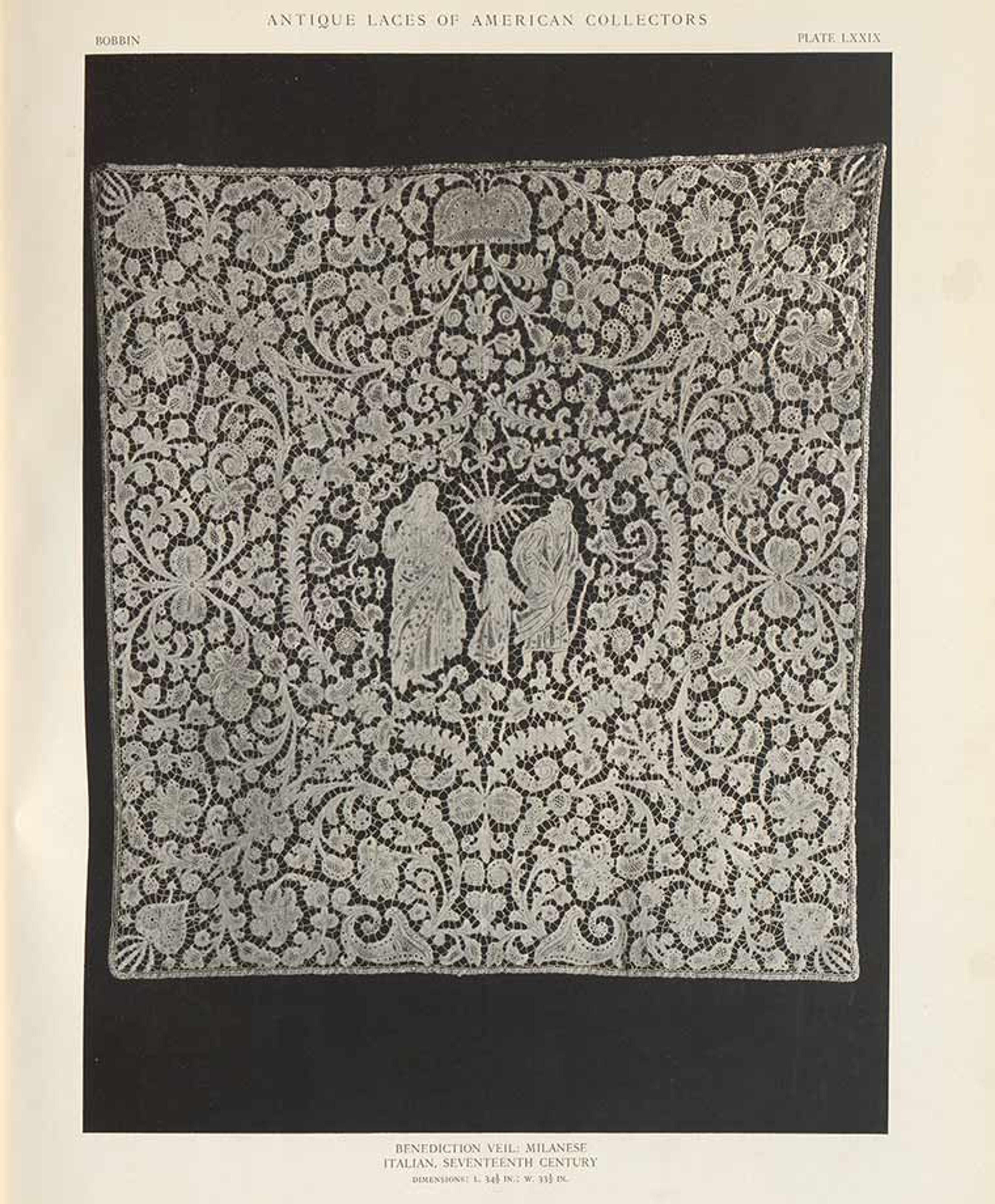
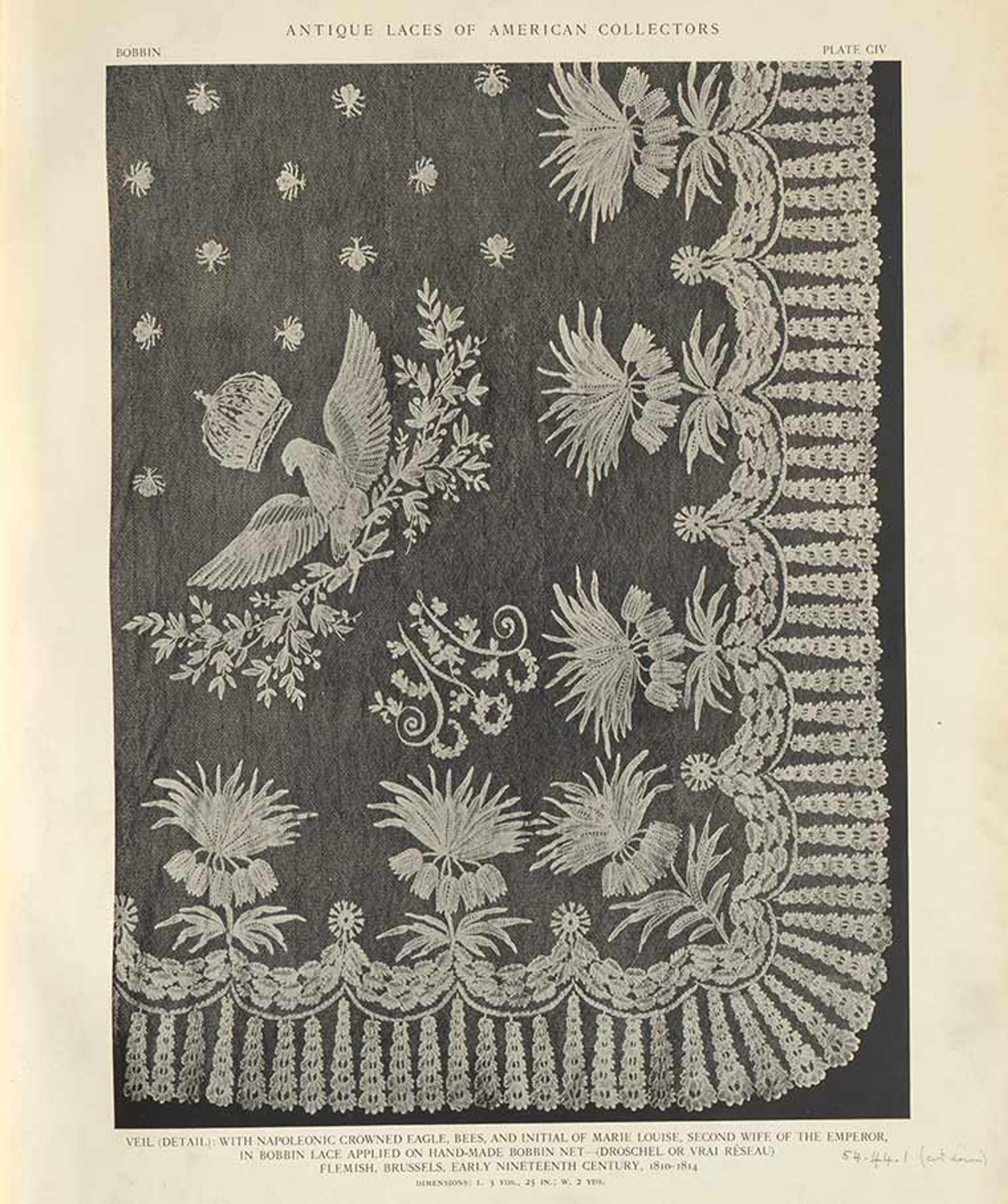
Two pages from Antique Laces of American Collectors (New York: Published for the Needle and Bobbin Club by W. Helburn Inc., 1920–1926)
Since the book's publication, many of the pieces included have been donated to The Met and are now in the collection. One of the later textile curators penciled in the accession numbers associated with each photograph, making it easy to find the actual object in The Met’s collection. For example, here is a lace apron as it appears in the book and as it appears in The Met's online collections.

Detail of 16th century lace apron from Antique Laces of American Collectors (New York: Published for the Needle and Bobbin Club by W. Helburn Inc., 1920–1926)
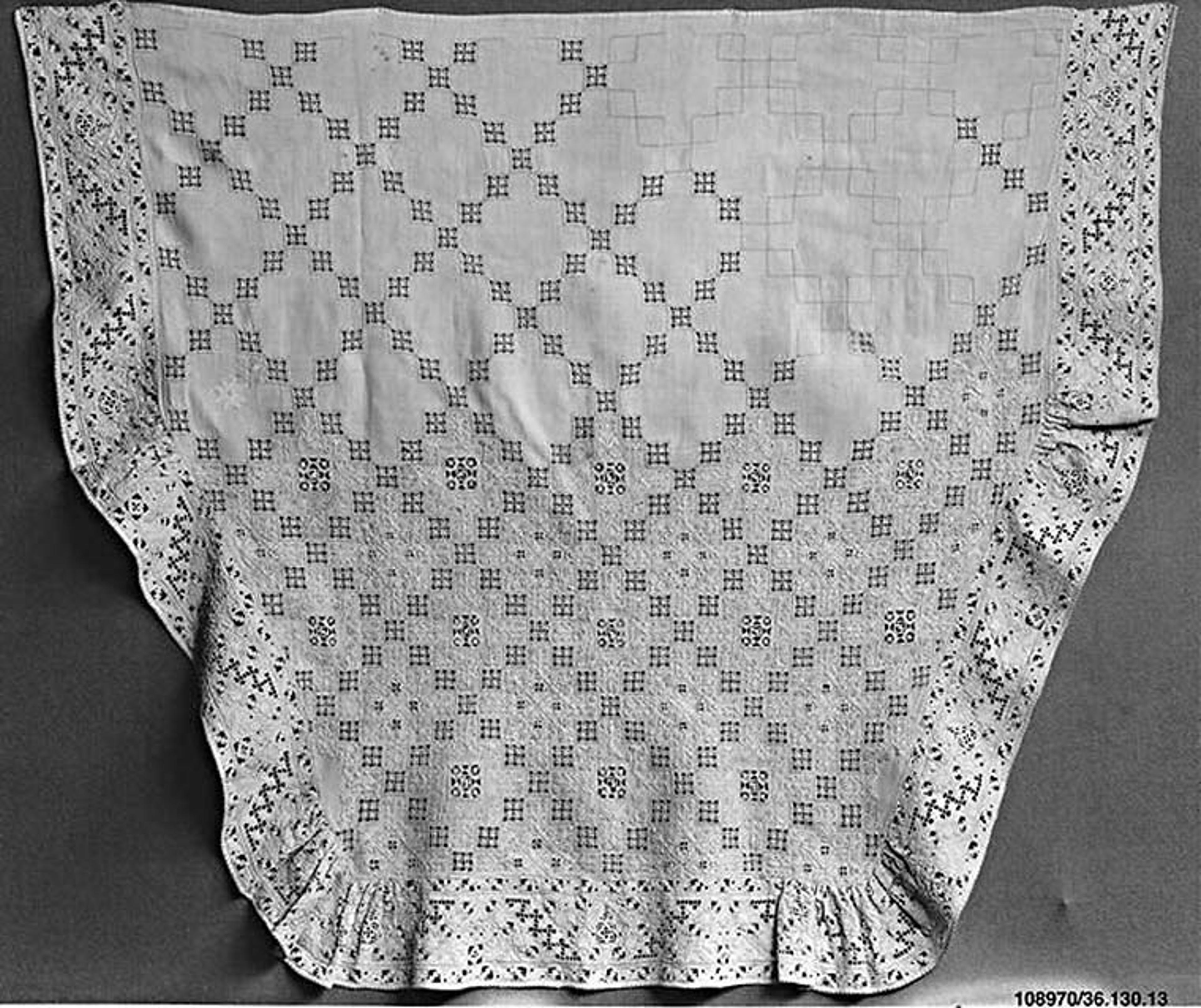
Apron, 16th century, Italian. Cutwork, drawnwork, embroidery, linen. The Metropolitan Museum of Art. Gift of Ann Payne Blumenthal, 1936 (36.130.13)
I was able to view several of these pieces at the Antonio Ratti Textile Center, and they were even more beautiful in person.
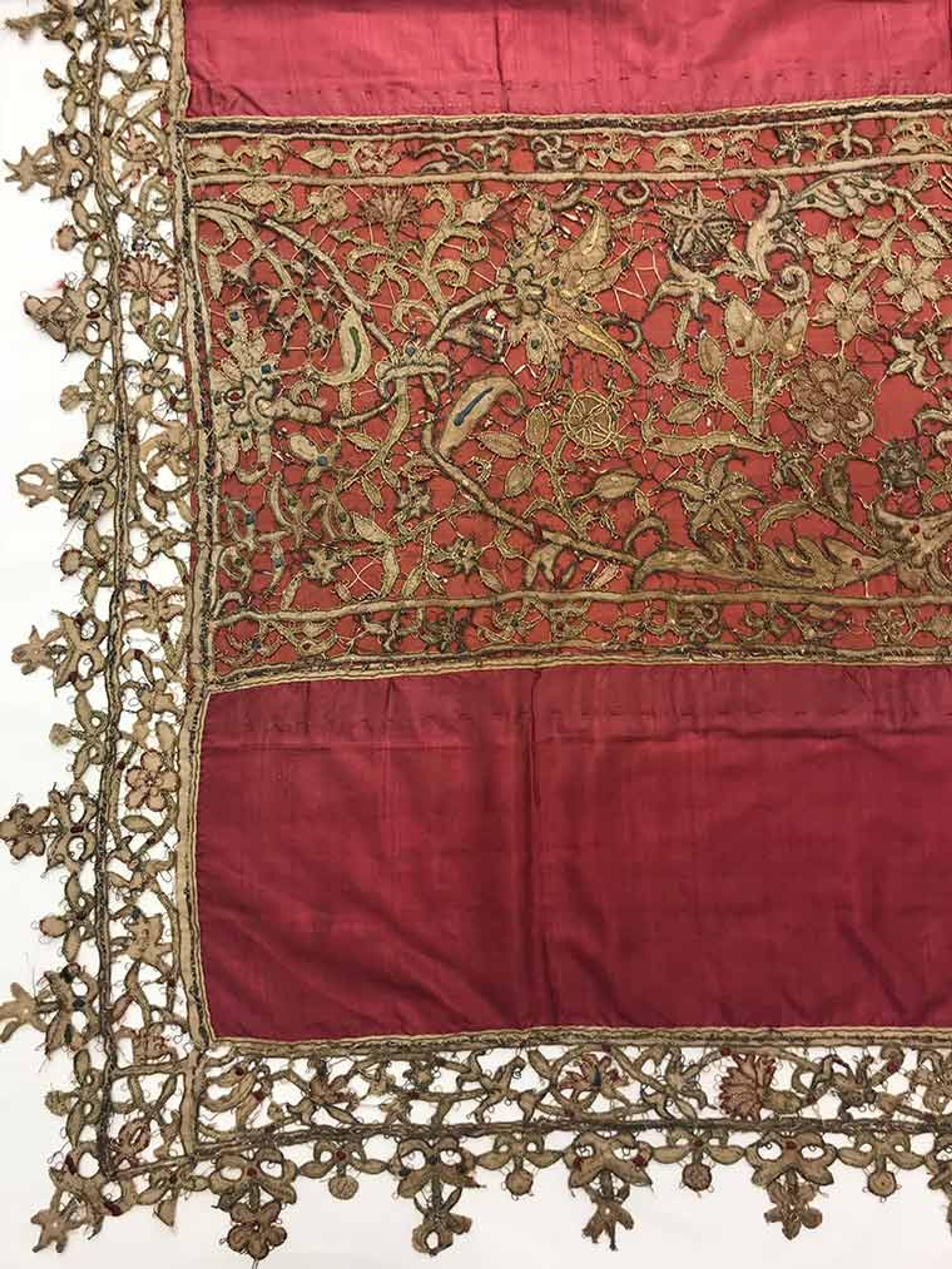
Veil, 17th century, Italian. Embroidered net, linen and metal-wrapped thread. The Metropolitan Museum of Art. The Mabel Metcalf Fahnestock Collection, the gift of Ruth Fahnestock Schermerhorn and Faith Fahnestock, 1933 (33.90.4)
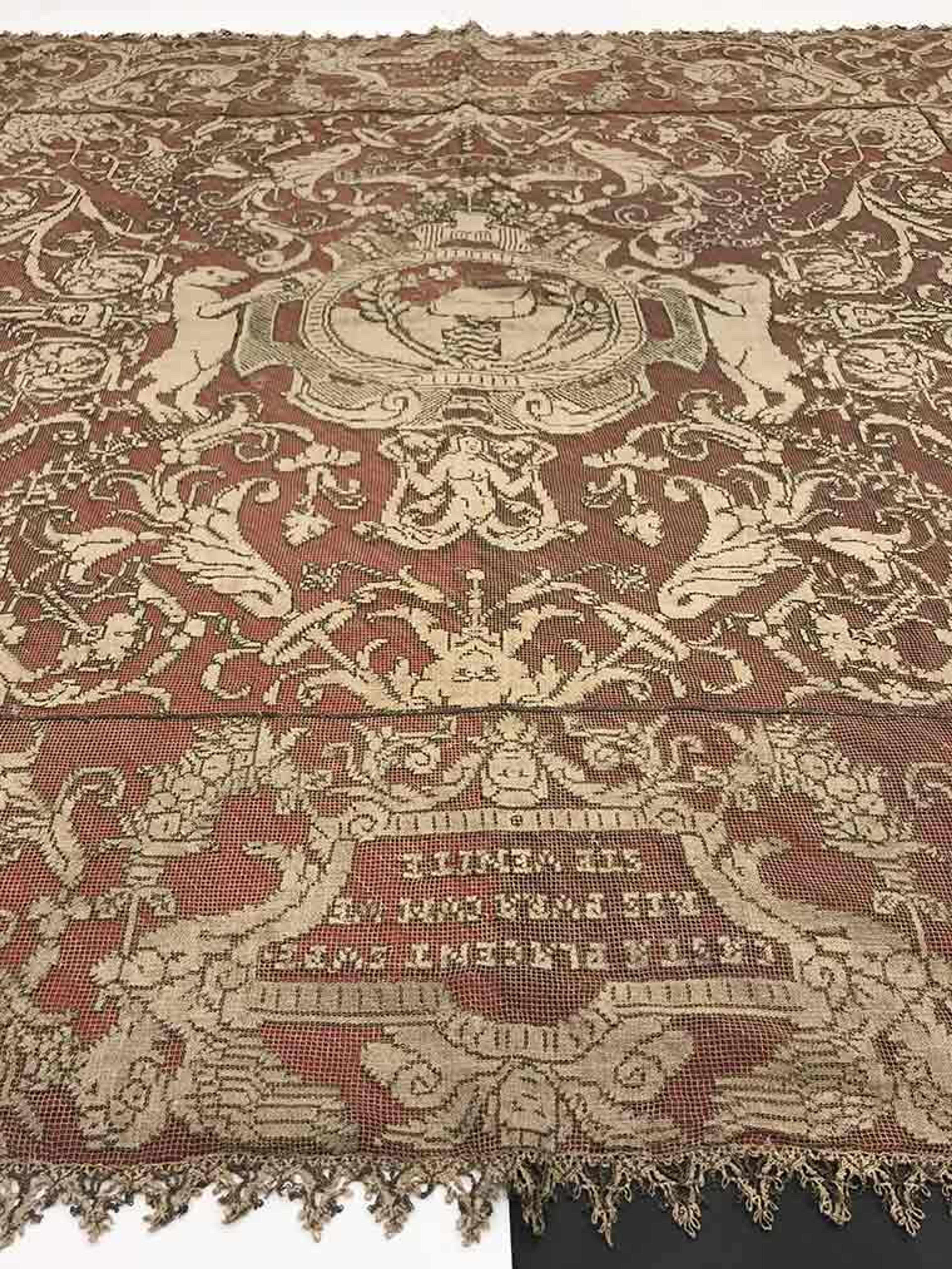
Baptismal veil, early 17th century, Spanish or Italian. Silk and metal thread, cutwork. The Metropolitan Museum of Art. Anonymous Gift, 1879 (79.1.86)
My internship is at an end, but it has been incredible to work with such unique and beautiful books and textiles. Thank you to Robyn Fleming and the rest of the Watson and Ratti Center staff for helping me along the way!
